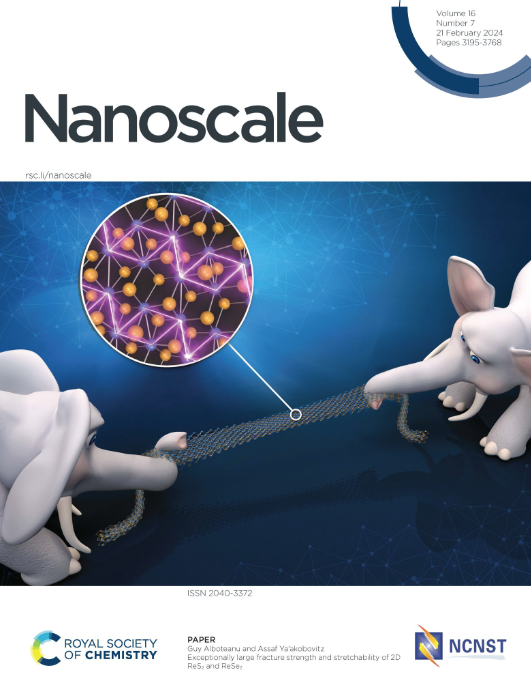外差AFM-IR和化学力显微镜表征功能化石墨烯的纳米尺度化学性质
IF 5.8
3区 材料科学
Q1 CHEMISTRY, MULTIDISCIPLINARY
引用次数: 0
摘要
纳米级分析对于理解和设计先进材料的功能特性至关重要,特别是在需要精确控制表面化学的应用中。在这项工作中,我们提出了一种强有力的策略,通过结合外差afm红外(AFM-IR)显微镜和化学力显微镜(CFM)来探测石墨烯上化学功能物质的纳米级非均质性。AFM-IR提供纳米级分辨率的化学指纹信息,使表面功能物质的直接表征成为可能,而互补CFM则揭示了纳米级表面形态与特定表面化学相互作用。这种组合方法成功地可视化了液相光诱导共价修饰(PICM)方法引入的石墨烯上化学功能物质的纳米级非均质性。具体来说,我们的研究结果表明,氧化官能团(如羧基、羟基和环氧化物)相对均匀地分布在picm修饰的区域上。相反,甲氧基形成纳米级结构域,集中在PICM区域的中心。该研究首次成功实现了石墨烯表面官能团纳米尺度非均质性的分子指纹可视化。由于该方法从根本上适用于广泛的样品系统,包括其他二维原子层材料、聚合物和生物样品,因此我们的工作对基础科学和工业应用都具有重要意义。本文章由计算机程序翻译,如有差异,请以英文原文为准。
Nanoscale Chemical Characterization of Functionalized Graphene by Heterodyne AFM-IR and Chemical Force Microscopy
Nanoscale analysis is of critical importance for understanding and engineering the functional properties of advanced materials, particularly in applications requiring precise control of surface chemistry. In this work, we present a powerful strategy to probe the nanoscale heterogeneity of chemical functional species on graphene by combining heterodyne AFM-based infrared (AFM-IR) microscopy and chemical force microscopy (CFM). AFM-IR provides nanoscale-resolved chemical fingerprint information, enabling direct characterization of surface functional species, while complementary CFM reveals specific surface chemical interaction at the nanoscale with surface morphology. This combined approach successfully visualizes the nanoscale heterogeneity of chemical functional species on graphene introduced by a liquid-phase photoinduced covalent modification (PICM) method. Specifically, our results reveal that oxidative functional groups such as carboxyl, hydroxyl, and epoxide groups are relatively uniformly distributed across the PICM-modified regions. In contrast, methoxy groups form nanosized domains concentrated at the center of the PICM regions. This study represents the first successful molecular fingerprint visualization of nanoscale heterogeneity in functional groups introduced on graphene surfaces. As this method is fundamentally applicable to a wide range of sample systems—including other 2D atomic layer materials, polymers, and biological samples—, our work provides significant implications for both basic science and industrial applications.
求助全文
通过发布文献求助,成功后即可免费获取论文全文。
去求助
来源期刊

Nanoscale
CHEMISTRY, MULTIDISCIPLINARY-NANOSCIENCE & NANOTECHNOLOGY
CiteScore
12.10
自引率
3.00%
发文量
1628
审稿时长
1.6 months
期刊介绍:
Nanoscale is a high-impact international journal, publishing high-quality research across nanoscience and nanotechnology. Nanoscale publishes a full mix of research articles on experimental and theoretical work, including reviews, communications, and full papers.Highly interdisciplinary, this journal appeals to scientists, researchers and professionals interested in nanoscience and nanotechnology, quantum materials and quantum technology, including the areas of physics, chemistry, biology, medicine, materials, energy/environment, information technology, detection science, healthcare and drug discovery, and electronics.
 求助内容:
求助内容: 应助结果提醒方式:
应助结果提醒方式:


